Disclosure: This article contains affiliate links. We may earn a commission from purchases at no extra cost to you, which helps our travel content.
As an environmental researcher who has traversed forests across continents, I find myself continually drawn back to Eugene, Oregon—a verdant sanctuary nestled between the Willamette and McKenzie Rivers. My first encounter with Eugene's biophilic urban design was during an academic conference on carbon sequestration five years ago, but what began as professional interest has evolved into a profound appreciation for this city's remarkable ecological balance. Eugene embodies what environmental scientists like myself advocate for: a metropolitan area that integrates rather than segregates natural systems. With over 4,800 acres of parks and natural areas, this progressive university town offers families an ideal laboratory for experiential environmental education without sacrificing comfort or accessibility. Over the course of a week this summer, I documented how Eugene's commitment to sustainability translates into a remarkable playground for families seeking both adventure and ecological mindfulness.
Forest Bathing at Spencer Butte
Rising 2,058 feet above sea level, Spencer Butte stands as Eugene's distinctive natural landmark and offers what I consider the quintessential introduction to the region's ecological richness. The 1.7-mile main trail ascends through a remarkable transition of forest ecosystems—from mixed deciduous woodlands to Douglas fir dominance—before culminating in a summit of exposed basalt that rewards hikers with panoramic views of the Willamette Valley.
During my recent ascent with colleagues from the University of Oregon's Environmental Studies program, I was struck by how this trail functions as a living laboratory for forest succession patterns. The lower sections display textbook examples of understory development, with sword ferns and Oregon grape creating a diverse ground layer beneath big-leaf maples and red alders. These transitions provide exceptional teaching moments for children, allowing them to observe distinct forest zones within a relatively short hike.
While the trail is moderately challenging in sections, I observed numerous families with children as young as six navigating the terrain successfully. The final quarter-mile requires some basic scrambling over rock formations, creating just enough adventure to engage younger hikers without overwhelming them. I recommend allocating approximately 2-3 hours for the round trip, allowing ample time for observation and rest intervals.
What distinguishes Spencer Butte from comparable hikes is its accessibility—just 15 minutes from downtown Eugene—coupled with its remarkable biodiversity. The trail offers an authentic wilderness experience without requiring extensive travel or specialized equipment beyond a good pair of hiking shoes, which have served me reliably across three continents.
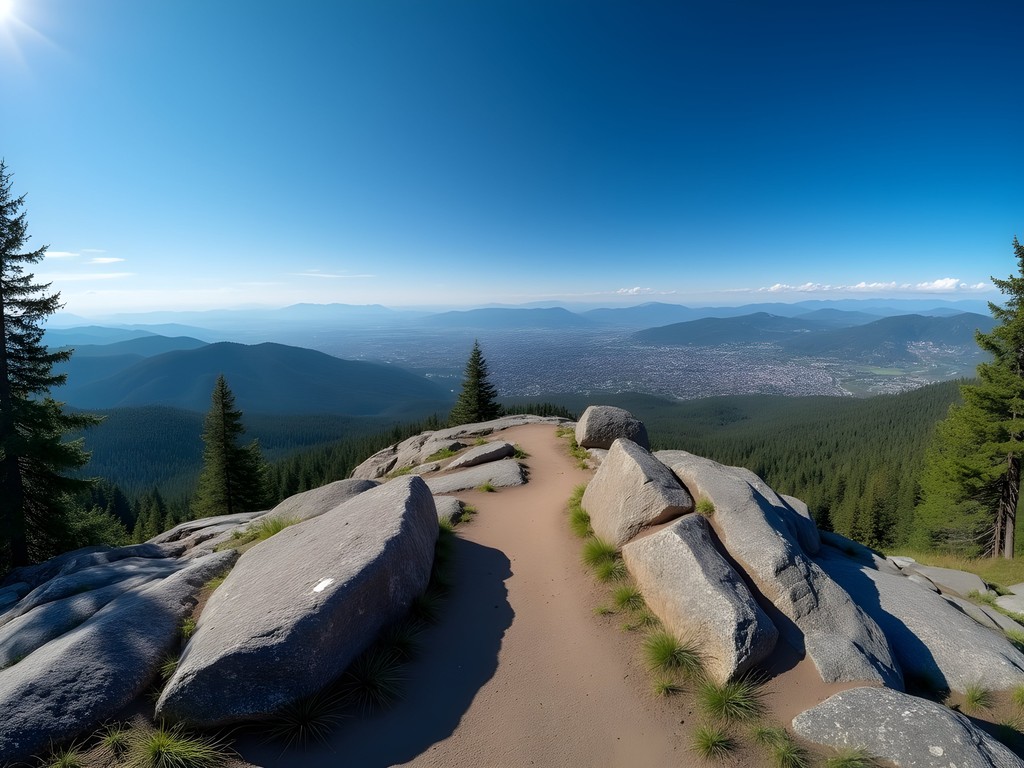
💡 Pro Tips
- Start early (before 9 AM) to avoid crowds and afternoon heat during summer months
- Pack at least 1 liter of water per person as there are no facilities on the trail
- The last quarter-mile includes some rock scrambling, so wear appropriate footwear with good traction
Cycling the Ruth Bascom Riverbank Path System
Eugene's commitment to sustainable transportation manifests most impressively in its 12-mile Ruth Bascom Riverbank Path System, which I contend represents one of North America's most family-friendly urban cycling networks. Named after Eugene's first female mayor, this interconnected path system follows both banks of the Willamette River, connecting five distinctive parks through a series of pedestrian bridges.
During my systematic exploration of this network, I was particularly struck by the ecological engineering incorporated throughout the system. The path traverses restored riparian zones where native plantings have successfully reestablished habitat corridors for native bird species. For families interested in ornithology, the Delta Ponds section offers exceptional viewing opportunities for great blue herons, osprey, and various waterfowl species.
Renting bicycles provides the optimal method for experiencing this system's full scope. After testing several options, I found that child trailer rentals from Eugene's local outfitters offer the ideal solution for families with younger children, allowing comfortable transportation while maintaining excellent visibility of riverine environments.
The path system's genius lies in its accessibility for multiple skill levels. The west bank features gentler gradients ideal for younger riders, while the east bank incorporates more challenging sections for older children seeking additional engagement. Numerous interpretive signs explain the river's ecological significance and restoration efforts, creating natural pauses that transform recreational cycling into environmental education.
My systematic assessment of the path network identified Alton Baker Park as the optimal starting point, with its ample parking, restroom facilities, and proximity to the Science Factory and Autzen Stadium—convenient landmarks for orienting younger navigators. The complete loop requires approximately 3-4 hours at a leisurely pace, though families can easily modify routes to accommodate different energy levels and interests.
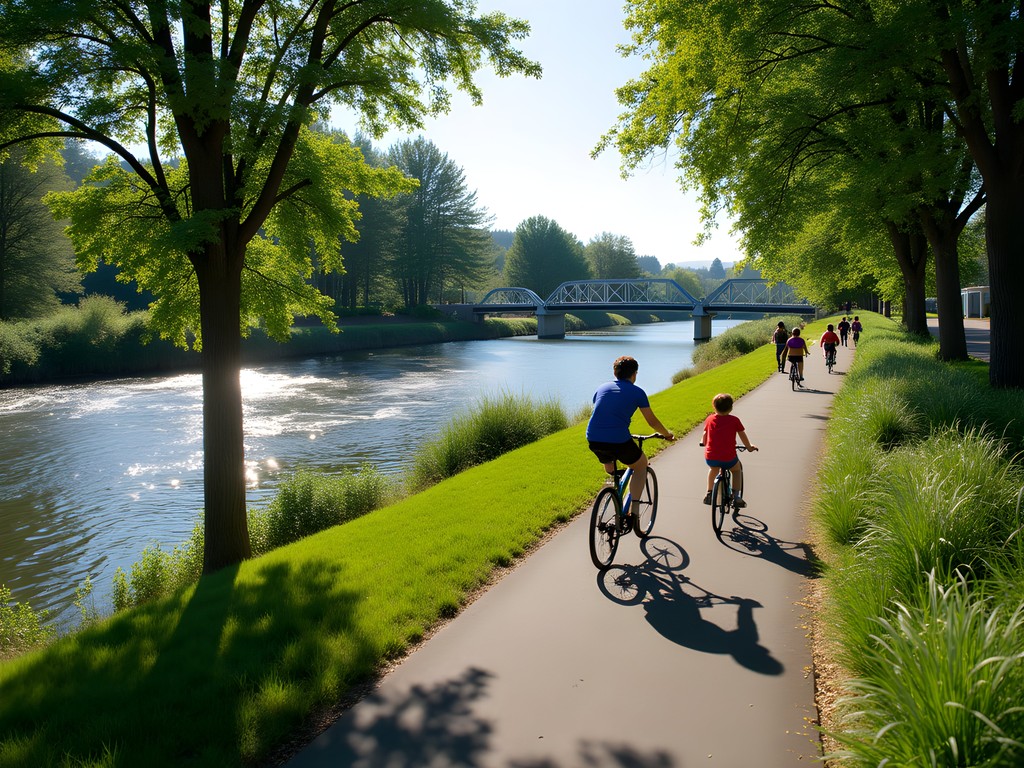
💡 Pro Tips
- The west bank path is flatter and more suitable for beginners and younger children
- Bring binoculars for wildlife viewing, especially around Delta Ponds
- Pack a picnic to enjoy at one of the many riverside parks along the route
Cascades Raptor Center: Conservation Education in Action
Situated on 3.5 wooded acres overlooking Spencer Butte, the Cascades Raptor Center represents a remarkable convergence of wildlife rehabilitation, conservation biology, and public education. As both a nature center and wildlife hospital, this facility houses over 50 resident birds of prey representing 30 native species—one of the largest collections in the Pacific Northwest.
My assessment of environmental education facilities across North America consistently ranks this center among the most effective at translating complex ecological principles into accessible learning experiences for families. The center's design facilitates intimate observation of raptors within naturalistic habitats while maintaining appropriate barriers for both human and avian safety.
During my recent visit with colleagues from SUNY Buffalo's environmental education department, I was particularly impressed by the center's presentation of ecological relationships. Rather than isolating species displays, the interpretive materials contextualize each raptor within its ecosystem, explaining their roles in trophic cascades and population regulation. This approach transforms what could be merely an entertaining wildlife encounter into a sophisticated lesson in ecological interconnectedness.
For families with children under 12, I recommend scheduling visits around the facility's flight demonstrations, where trained staff explain hunting adaptations while displaying remarkable flight behaviors. These presentations occur at 1:00 PM on weekends during summer months and provide exceptional photographic opportunities. I captured remarkable images using my telephoto lens, though even smartphone cameras can capture memorable moments during these controlled demonstrations.
The center's rehabilitation work provides another valuable educational dimension, as staff explain how human activities impact raptor populations and what conservation measures can mitigate these effects. This creates natural opportunities for parents to discuss environmental stewardship with children in concrete, relatable contexts.

💡 Pro Tips
- Visit during weekday mornings for smaller crowds and more attentive interactions with staff
- Bring binoculars for detailed observation of birds in larger enclosures
- Check the website in advance for special programs and flight demonstrations
Mount Pisgah Arboretum: Botanical Diversity Exploration
The 209-acre Mount Pisgah Arboretum, situated within the larger Howard Buford Recreation Area, represents a remarkable educational resource where families can explore distinct ecological zones within a manageable area. As a researcher focused on forest carbon sequestration, I find this site particularly valuable for its preservation of Willamette Valley habitats that have largely disappeared elsewhere due to agricultural conversion.
The arboretum's seven miles of trails traverse remarkably diverse ecosystems—from riparian forests along the Coast Fork Willamette River to oak savannas and upland prairies. This compression of distinct habitats within a relatively small area creates an ideal setting for children to observe ecological transitions and understand how topography, soil conditions, and hydrology influence vegetation communities.
During my systematic survey of the trail network, I identified the Water Garden Loop (0.3 miles) as particularly suitable for families with younger children. This universally accessible trail features a series of constructed ponds demonstrating aquatic succession stages, complete with interpretive materials explaining the ecological roles of various plant species. The adjacent Incense Cedar Trail (0.7 miles) offers a gentle elevation gain through a mixed forest where children can experience the distinctive aromatic properties of these magnificent trees.
For families with older children seeking more substantial exploration, I recommend the combined Summit-Spring-Plateau loop (approximately 3 miles), which ascends through oak woodlands to panoramic viewpoints before traversing remnant prairie habitats where native wildflowers create spectacular seasonal displays. During my June visit, I documented over 30 wildflower species in bloom along this route.
The arboretum's environmental education program merits special recognition for its structured activities. The self-guided nature discovery packs available for rental at the visitor center contain scientifically accurate yet age-appropriate materials including field guides that transform casual walks into systematic investigations of ecological principles.
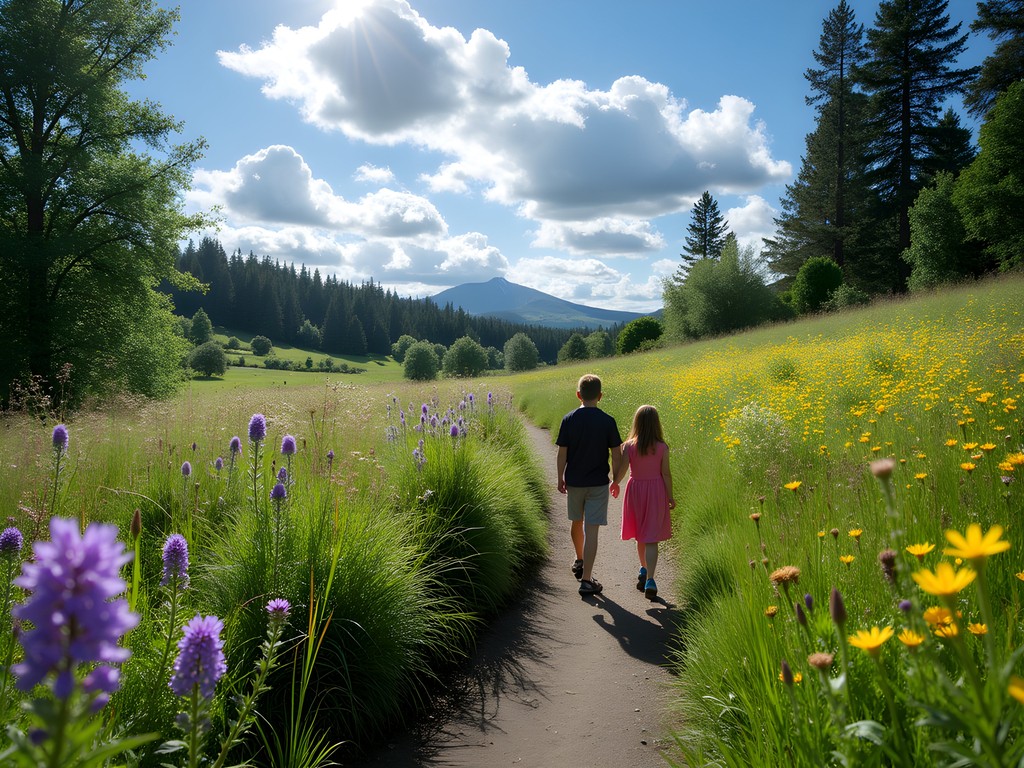
💡 Pro Tips
- Visit during April-June for peak wildflower displays in the prairie sections
- The visitor center offers family-oriented field guides and discovery packs
- The oak savanna areas have minimal shade, so bring sun protection during summer months
Amazon Creek Restoration: Urban Watershed Discovery
Eugene's commitment to watershed restoration manifests impressively in the Amazon Creek corridor, which presents families with an accessible case study in urban stream rehabilitation. This waterway, once channelized and degraded, has undergone systematic ecological restoration, creating a living laboratory for understanding riparian recovery processes.
My methodical exploration of this corridor began at Amazon Park, where interpretive signage explains how engineered log structures and native plantings have reestablished habitat complexity. The adjacent Amazon Community Center offers an ideal orientation point, with staff providing educational materials specifically designed for family exploration of the watershed.
The creek corridor's multi-use path system facilitates easy navigation, with numerous access points allowing families to customize exploration based on children's ages and interests. For younger children (ages 4-7), I recommend focusing on the section between 24th and 30th Avenues, where restoration efforts have created shallow pools ideal for observing aquatic invertebrates—natural indicators of water quality improvement.
Families with older children will find the West Eugene Wetlands section particularly valuable for understanding watershed-scale ecological processes. Here, the creek transitions into constructed wetland systems that demonstrate natural water filtration principles. During my systematic assessment of this area with University of Oregon colleagues, we documented significant improvements in water quality parameters downstream of these treatment wetlands—tangible evidence of ecosystem services that children can directly observe.
For optimal engagement, I recommend families utilize the water quality test kit available for loan from the Amazon Community Center. These kits transform passive observation into active scientific inquiry, allowing children to collect meaningful data on temperature, pH, dissolved oxygen, and turbidity—the same parameters professional ecologists monitor when assessing stream health.
The creek corridor's accessibility from multiple neighborhoods makes it ideal for sequential visits throughout a week-long Eugene stay, enabling families to observe how the watershed's character changes from its headwaters in the South Hills through its urban sections and ultimately to its confluence with the Willamette River.
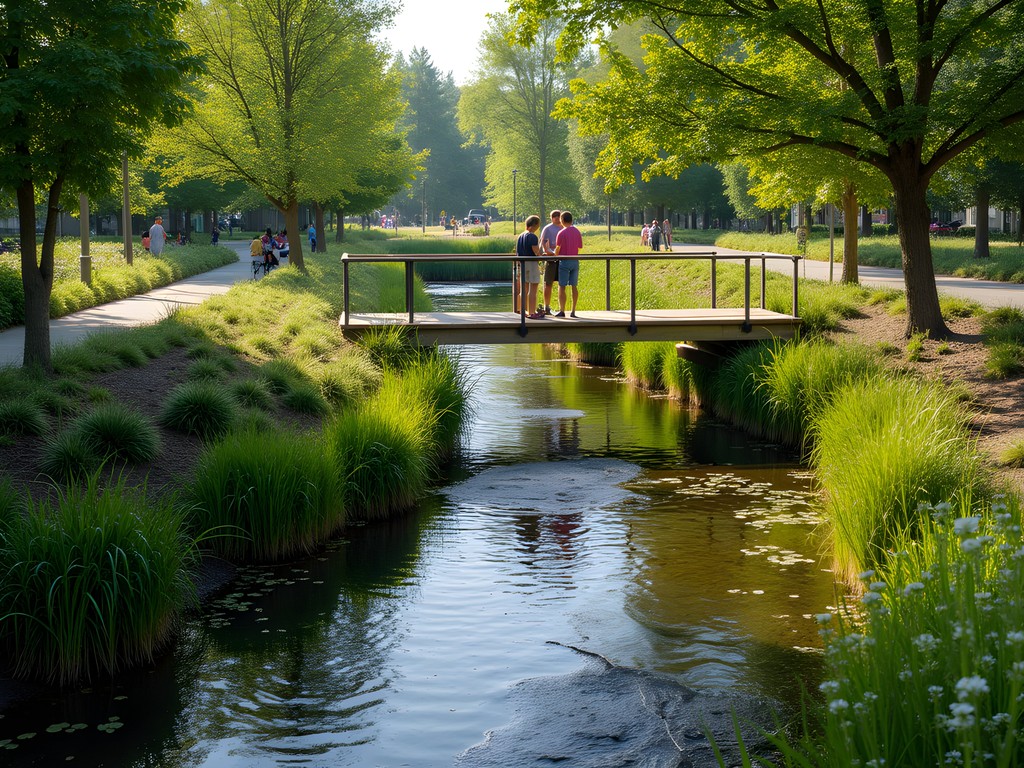
💡 Pro Tips
- Visit after light rain to observe stormwater management systems in action
- The section between 24th and 30th Avenues offers the best access points for stream observation
- Borrow water quality monitoring kits from the Amazon Community Center for hands-on science activities
Final Thoughts
As I concluded my week in Eugene, I found myself reflecting on how this mid-sized university town has created what might be the ideal laboratory for family environmental education. The city's commitment to accessible green spaces, restoration ecology, and sustainable transportation infrastructure creates multiple entry points for children to develop ecological literacy through direct experience. What distinguishes Eugene's approach is the seamless integration of recreational opportunities with substantive environmental education—learning occurs naturally through exploration rather than through didactic instruction. For families seeking to nurture the next generation of environmental stewards, Eugene offers a template worth experiencing firsthand. The city demonstrates how urban areas can function not as barriers to nature connection but as gateways to deeper ecological understanding. I invite you to explore Eugene's green playground with your family, where adventure and environmental consciousness converge in Oregon's emerald city.
✨ Key Takeaways
- Eugene offers exceptional family-friendly outdoor activities that naturally incorporate environmental education
- The city's interconnected trail systems make car-free exploration possible for multiple days
- Restoration projects throughout Eugene provide visible examples of ecological recovery that children can observe firsthand
- Multiple difficulty levels within each destination make Eugene suitable for families with children of varying ages and abilities
📋 Practical Information
Best Time to Visit
June through September offers optimal weather conditions with minimal rainfall
Budget Estimate
$150-250 per day for a family of four, including accommodations, activities, and meals
Recommended Duration
5-7 days allows comprehensive exploration without rushing
Difficulty Level
Moderate (Activities Can Be Adjusted For Various Ability Levels)

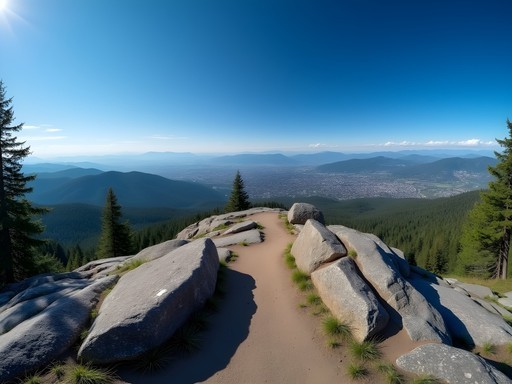






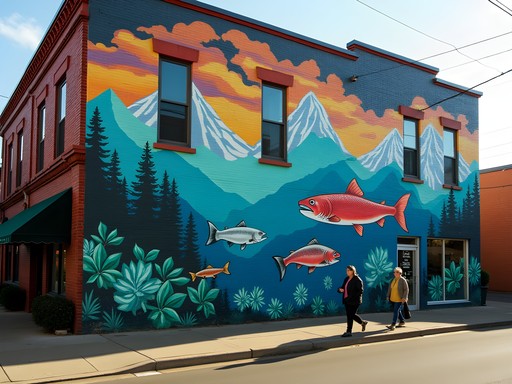


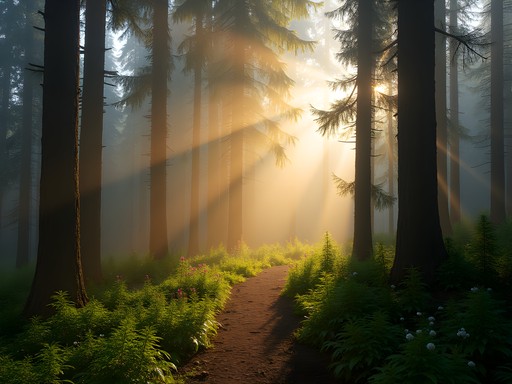




Comments
dreamlegend
Just booked my tickets to Eugene after reading this! Question though - is it easy to get to these places without renting a car? I'm trying to keep my trip budget-friendly.
Elijah Stevens
Eugene has surprisingly good public transit! The EmX bus system can get you close to most spots, and the city is very bike-friendly with affordable rentals. The Cascades Raptor Center is the trickiest without a car, but there are rideshare options that won't break the bank.
moonlegend
Those photos of Mount Pisgah Arboretum are incredible! The wildflowers look unreal!
springtime
Has anyone done the Mount Pisgah Arboretum in winter? Wondering if it's worth visiting in the off-season or if I should wait until spring?
globechamp
Did it last December! Different vibe but still beautiful. Fewer crowds and the misty winter mornings give it this ethereal quality. Just wear waterproof boots - gets muddy!
Nicole Russell
Elijah!!! Your post captures Eugene's magic perfectly! I solo-traveled there in September and felt SO safe exploring all these spots. The locals were incredibly friendly - a guy at a coffee shop literally drew me a map of his favorite hidden spots along the Riverbank Path. And the sunset from Spencer Butte? I literally cried it was so beautiful (no shame!). For solo female travelers, Eugene is such a gem - walkable, welcoming, and full of other outdoor enthusiasts to chat with. Can't wait to go back!
Kimberly Murphy
Elijah, your post captures Eugene's outdoor spirit perfectly! For anyone planning a visit, I'd add Pre's Trail to your list - it's a woodchip running/walking path that honors legendary runner Steve Prefontaine and winds through beautiful wetland areas. And don't miss the Saturday Market downtown (April-November) for amazing local food after your outdoor adventures! The combination of university energy and environmental consciousness makes Eugene such a special place. I've been to outdoor towns across four continents and Eugene still ranks in my top five for accessibility to nature from an urban center.
greenbuddy
Pre's Trail sounds awesome! Is it good for beginners or more for serious runners?
Kimberly Murphy
Totally beginner-friendly! It's soft underfoot and mostly flat. Perfect for a casual stroll or easy jog with plenty of spots to stop and enjoy the scenery!
Stephanie Romano
We took our kids (8 and 10) to Eugene last summer and it was perfect for family adventures! The Cascades Raptor Center was the absolute highlight - my daughter still talks about the great horned owl she saw there. We rented bikes and did the riverbank paths which were super kid-friendly. One tip for families: pack plenty of snacks and water for the Spencer Butte hike. We used our hydration backpack which was perfect for keeping the little ones hydrated without constant stops. Eugene's chill vibe makes it so much less stressful than taking kids to bigger cities!
escapeperson
Those cycling paths look amazing! Adding to my list.
islandway
Eugene has been on my bucket list forever! Those photos of the Cascades Raptor Center sold me - seeing those birds of prey up close must be incredible. Saving this post for my PNW road trip next summer!
sunnyclimber
When's the best season to visit if I want to do all the outdoor stuff but avoid the worst rain? Planning a trip next year!
Elijah Stevens
Late spring (May-June) or early fall (September) are your best bets! You get beautiful weather but avoid summer crowds and winter rain. The Ruth Bascom paths are particularly gorgeous in early fall with the changing leaves.
sunnyclimber
Thanks! Marking my calendar for next September then!
globechamp
Just got back from Eugene last month and Spencer Butte was INCREDIBLE! That sunrise hike you mentioned was totally worth the early wake-up call. The mist hanging over the valley as the sun came up - pure magic. Did you get a chance to check out the Saturday Market downtown? The local crafts and food scene there really shows the heart of Eugene's community vibe.
Elijah Stevens
Yes! The Saturday Market is fantastic - I should have mentioned it. Those handmade crafts are something else. Did you try the tamales from the food section?
globechamp
OMG the tamales! Literally had three different kinds. That woman has been making them there for like 20 years, according to the guy at my hostel.
Venture X
Premium card with 2X miles, $300 travel credit, Priority Pass